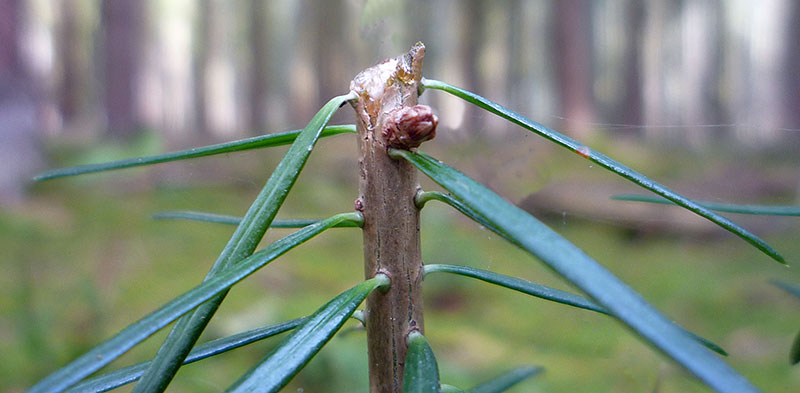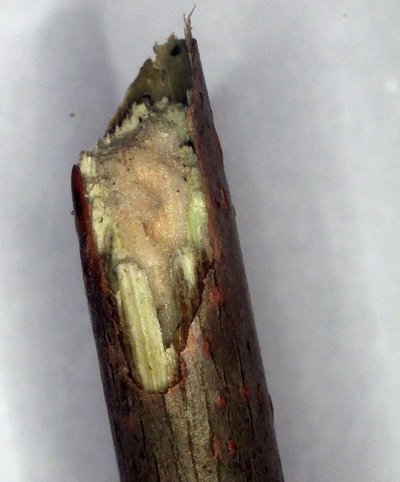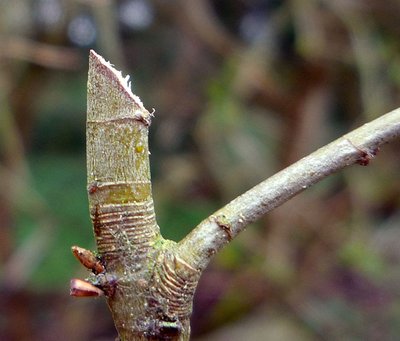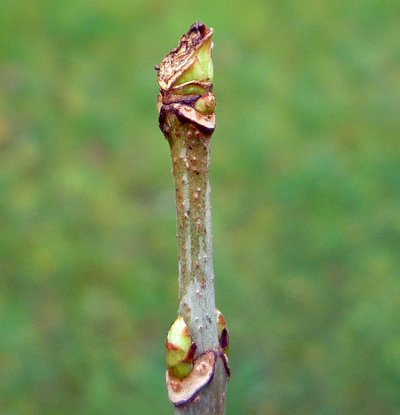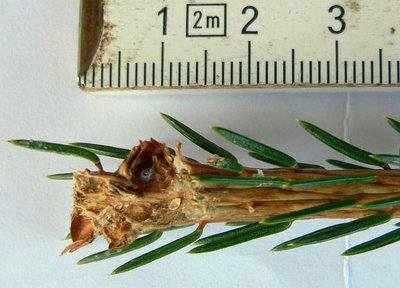Browsing from hoofed game can lead to significant damage on forest regeneration, especially at high animal densities. Regeneration can be killed by browsing but impacts on growth and quality (e.g. creation of forking) are also possible. It happens again and again that the diversity of young stands are reduced through selective browsing from hoofed game since trees which are not favorable for browsing are left alone and the rare trees are preferred for consumption.
It's not always hoofed game
Hoofed game is the most significant contributor to browsing damage in our forests. Browsing damage on young regeneration is not only caused by roe deer, chamois or red deer; damage to buds can also be inflicted by other mammals such as hares, rabbits, squirrels or mice. In most cases the respective browsing culprit can be reliably determined based on the following diagnostic characteristics.
The difference between the appearance of browse damage is primarily based on the arrangement of teeth as well as the size and mode of life of the animal species and groups. For example, the various types of hoofed game do not have incisors on the upper jaw but rather a chewing palate. This is why the buds are typically "plucked" and crushed producing a ragged edge on damaged twigs. Rodents on the other hand have sharp incisors on the upper and lower jaws. As a result, the surface of the browsing damage from rodents is usually flat and the twig is not crushed. Also the different angles of the browse "cut" is a result of the various different types of teeth arrangements.
Nevertheless, in isolated cases it is possible that a decisive identification of the browsing culprit will not be achieved. This is especially true with non-woody young shoots (summer browse) or with small shoot diameters since the "typical" images of browse can be blurred and is not distinct.
Identify browse correctly
Hoofed game
- Browsing preferred on oak, various rare deciduous trees plus silver fir
- Browsing predominantly during the winter months (winter browsing); summer browsing especially on rare deciduous trees.
- Height of browsing damage: respective to the height of the animal; roe deer (without a layer of snow) most often between 20 and 90 centimeters
- Occasional (roe deer, chamois) till frequent (red deer) crushing of the shoots
- Predominantly coarse to ragged surface of the damage (most notably very ragged from red deer) due to the "plucking" of the shoot
- The angle of the browsing damage (i.e. angle of the bite) is mainly between 0° - 30°
Hare
- Browses preferably on deciduous trees (especially beech)
- Browses predominantly during the winter months (winter browsing)
- Broses commonly on forest edges
- Height of the browsing damage: usually between twenty and fifty centimeters (without a layer of snow)
- Frequently browses on multiple shoots of a single plant
- no crushing of the shoots
- Predominantly smooth edge of the browsing "bite" and hardly produces a ragged edge due to the "cutting" of the shoot
- The angle of the browsing (i.e. angle of the bite) is mainly between 30° - 60°
Mice
- Usually browses on young plants till twenty centimeters in height (without a layer of snow)
- As a rule, either a partial or complete consumption of the terminal bud; quite often the consumption of entire seedlings
- Site of the browsing "bite" is smooth till rough; groves from the incisors ("rodent tracks") can be seen to some extent with a magnifying glass
- When shoots are damaged by mice then usually there are other sources of evidence which point to their presence (e.g. mouse holes, tunnels, feeding damage on the bark)
Squirrel
- browses predominantly on spruce and silver fir
- Only the buds are consumed; shoots which have been cut off are found lying on the ground
- Browsing damage usually occurs on multiple shoots of a tree
- Frequent browsing damage on entire groups of trees in all age classes
- Browse on young plants a rare phenomenon
Grazing animals
In areas which still practice forest grazing the browsing damage from the animals can be an issue. Since grazing animals (cows, sheep, goats) and hoofed game are both ungulates, a purely visual distinction from hoofed game browse is hardly possible. However, if the browsing damage took place in the grazing free time period (winter browsing) than one can be sure that the damage was caused by hoofed game.
Other
Also other animals such as insects or birds (e.g. wood grouse) can cause damage on buds and shoots. After a close look, these damages can usually not be confused with those from hoofed game.

